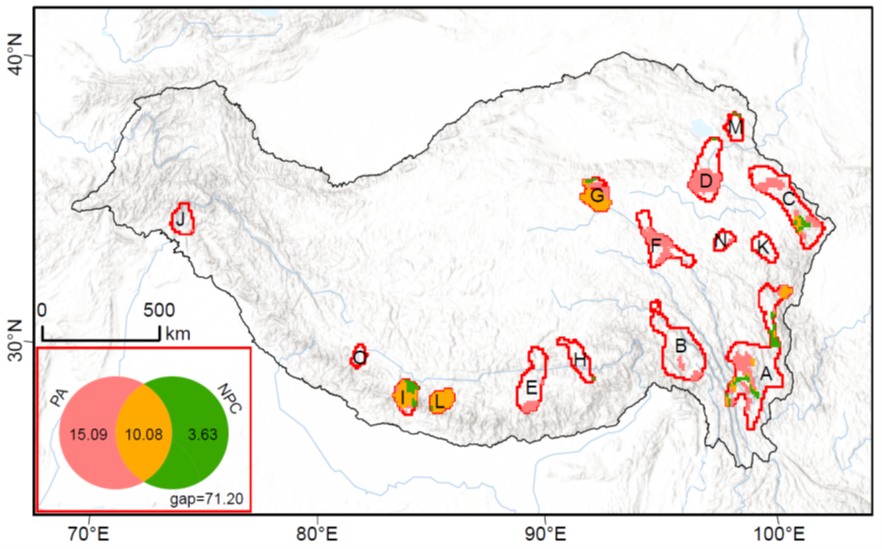
A new study led by researchers from the Kunming Institute of Botany (KIB) of the Chinese Academy of Sciences, in collaboration with scientists from Kenya, Canada, and the UK, has identified 15 high-priority areas for plant conservation across the Qinghai-Tibetan Plateau and surrounding regions—collectively known as the Third Pole.
Notably, over 70% of these areas lie outside current protected zones, raising concerns about the effectiveness of conservation strategies in the face of accelerating climate change.
Published in Global Change Biology, this study employs advanced spatial techniques that integrate genetic data with species distribution models and conservation planning tools.
The researchers compiled genetic data for 96 plant species, covering 2,141 populations across the Third Pole. Using species distribution models alongside a systematic conservation planning tool called Marxan, they mapped current and future hotspots of genetic diversity and vulnerability. It is projected that up to 15% of genetic diversity will be lost under mid-to-high emissions scenarios by 2090.
Furthermore, the study models a northward and upward shift in suitable habitats, averaging about 43 kilometers and 86 meters, due to rising temperatures. Without intervention, the evolutionary potential of many species will be severely compromised, diminishing their ability to adapt to future ecological changes. This study marks one of the first comprehensive efforts to incorporate genetic diversity into conservation prioritization at such a large scale.
The Third Pole is among the most biologically rich and vulnerable regions on Earth, home to over 18,000 vascular plant species, with roughly one in five found nowhere else.
As global temperatures rise, this region is expected to undergo some of its most extreme climate shifts, threatening its unique ecosystems and the livelihoods they support. Consequently, proactive conservation of plant species in the region is critical, necessitating the consideration of all levels of biodiversity in conservation planning.
Unlike species counts, genetic diversity reflects the raw material for adaptation, enabling plant populations to respond to environmental stressors, diseases, and changing climatic conditions. Despite its vital importance, genetic data are rarely included in large-scale conservation decisions.
To safeguard the evolutionary potential of plants, the study recommends expanding the conservation network in the Third Pole by nearly 6%, adding over 200,000 square kilometers. This expansion would bring the total protected area to almost 40% of the region, aligning with international biodiversity targets and ensuring that conservation efforts are biologically meaningful.

Optimization of conservation networks in the Third Pole using a systematic conservation planning approach in Marxan. (Image by KIB)

86-10-68597521 (day)
86-10-68597289 (night)

52 Sanlihe Rd., Xicheng District,
Beijing, China (100864)

